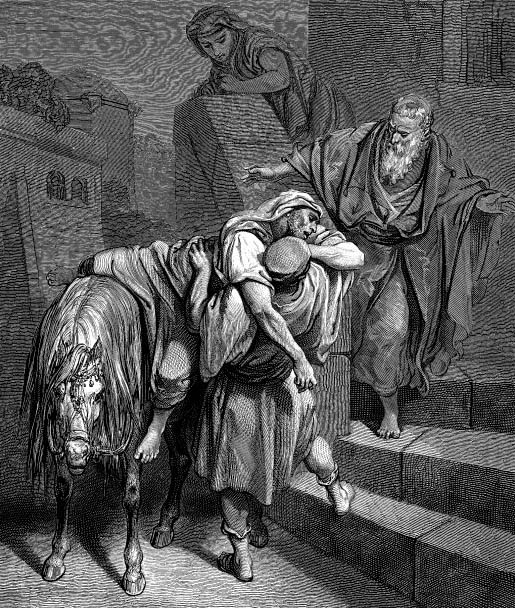Having just preached on the parable of the Good Samaritan—Luke 10:29-37—I thought I would share a little bit about understanding and interpreting parables.
There are many, many resources out there to help with understanding this particular Biblical genre. These resources are important, of course, because parables are part of Scripture and specifically are a significant part of Jesus’ teaching.
Of the many helps out there, here are two that I find both helpful and accessible: How to Understand and Apply the New Testament by Andrew David Naselli and Preaching the Parables by Craig L. Blomberg. For those of you familiar with our Corporis Conference, Andrew Naselli is our speaker for 2020!
Naselli addresses parables in his chapter entitled “Genre.” The big takeaway from Naselli’s engagement with this topic is, “Don’t overinterpret parables.” He gives an example of how Augustine overinterpreted the very parable I preached on yesterday. The picture below demonstrates Naselli’s point.

Naselli delivers six more principles with the interpretation and application of parables:
- Don’t assume that the stories in the parables themselves are historical. They probably aren’t real stories and whether they are or not doesn’t matter.
- Don’t propose allegorical meanings that aren’t anchored to the text. See photo above.
- Discern the main point or points. Many scholars believe that parables have only one point, but the author of the other book I mentioned above, argues that parables can have more than one point.
- Pay special attention to a parable’s historical and literary context. Answer the question, “What point is the author trying to make by placing this parable here?”
- Recognize common symbols. Naselli gives the example of common symbols used for God which include father, judge, king, master, and shepherd.
- Translate the main point into your own context. Because of our distance from the context of the parable, we may need help to fully grasp the author’s message.
Blomberg’s book also has many helpful general tips along with in-depth interpretation of many parables. Here are a few of his “Guiding Presuppositions” that he lays out in the introduction:
- All of Jesus’ parables impinge on his understanding of the “kingdom of God.” This is true whether that expression appears in the teaching or not.
- The main characters in Jesus’ parables “do stand for something.” They have symbolic significance to something in the spiritual realm. That being said, other elements in a parable should not be given symbolic significance unless there are clear textual reasons to do so.
- Jesus intended his parables both to conceal and reveal. Jesus knew those who were moving toward discipleship and those who were rejecting him and parables were to be helpful to those becoming disciples but cryptic to those rising in opposition.
- The process of contemporizing parables remains crucial. Providing a modern equivalent will be helpful for understanding.
Those are a few tips that will be helpful as we encounter more and more parables as we preach through the Gospel of Luke.




Leave a Comment